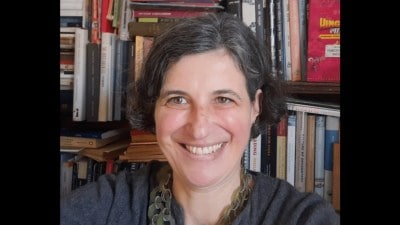Aiming for the ‘fullstop on the page’
The Olympics formally began here today with a beast of an event called the 10 metre air rifle shooting for women. Li Du of China won the gol...

The Olympics formally began here today with a beast of an event called the 10 metre air rifle shooting for women. Li Du of China won the gold, the first of the 2004 Games, and the sanctity of the moment was affirmed by the presence of IOC president Jacques Rogge at the Markopoulo Shooting Centre.
The event was keenly watched by the Indian contingent here, given that both Indian participants, Anjali Bhagwat and Suma Shirur, were being spoken of as medal hopes. As it happened, India won nothing. Anjali failed to qualify, shooting a low 393 (out of 400) in the qualification round, beginning with a nasty 96/100 in the first quarter that coach Sunny Thomas described as ‘‘indigestible’’ and ‘‘shocking’’.
Suma, a 30-year-old mother of one from Navi Mumbai, did a little better. Qualifying for the final with her final shot, literally, she finished eighth — last — in the medal-deciding round.
Later, she described herself as ‘‘disappointed’’. ‘‘I came here with two objectives, to reach the final and to win a medal. Only half got done.’’
Behind those bland numbers and straitlaced quotes lies the fascinating story of an event that enthralls and captivates only as much as it tests the human skill to the final, excruciating nicety. That may sound overstated but, remember, this is an event where 10 is perfect but not perfect enough. The final frontier is 10.9 — in a sense, 10.9 out of 10.
The participants line up in a quiet room, their rifles aimed at electronic targets, their bodies weighed down by lead-fortified trousers to ensure they keep still. This is, of course, all happening indoors. In outdoor shooting events, the wind is a huge imponderable which you have to balance with your hand-eye coordination and your nerves.
The target consists of, roughly, three concentric circles — the outer counts for seven points, the middle one for eight points and the bull’s eye for 10. If you shoot somewhere between the middle and final circles, you get a score of 9.0-9.9, depending on where the pellet hits.
Sounds straightforward? Now consider this. The bull’s eye is 0.5 mm in diameter. To hit it, said an observer at the shooting range today, ‘‘is to aim for a fullstop on a page’’.
In the qualification round, the shooters fire off four series of 10 shots each. With a maximum of 10 points per shot — if you get bull’s eye — that makes for an unbeatable score of 100 per series, 400 over the entire duration. A score of 400 has been reached eight times, all in non-Olympic competition, once by Suma.
The top eight qualifiers make it to the final for a last, desperate round of 10 shots. This time the bar is raised. Depending on how close you get to the centre of the inner circle — the ‘‘bull’s eye of the bull’s eye’’ — you get scores between 10 and 10.9. To get 10.9, you have to hit a dot the diameter of which is one-ninth of 0.5 mm. To shoot 10.9 consistently is impossible. To do it once is an act of God, not training.
Says Abhinav Bindra, who takes part in the men’s 10m air rifle contest next week: ‘‘It boils down to one word — luck.’’
Yet, as could perhaps be expected, the Olympic final today was an exhibition of the relentless quest for the impossible. Suma, a chemistry graduate from an academic family who took to shooting as an NCC cadet, did little wrong. In the third round, she shot 10.4 but finished fifth — every other shooter had also crossed 10. In the eighth round, Suma got to 10.3, joint last; six others reached between 10.4 and 10.8.
Speaking to The Sunday Express afterwards, Siddharth, Suma’s architect husband who has known her since she was 16, was philosophical. ‘‘Of course she’ll be disappointed’’, he said. ‘‘She really had a chance. This is a strange sport. You compete with yourself, not your opponent — it’s your mental framework.’’
If you mourn for Suma and feel sorry for Anjali, consider what Lioubov Galkina must be going through tonight. The Russian girl scored an Olympic record of 399 in the qualifiers. She led through nine rounds of the final, getting two 10.8s, one 10.9, nothing below 10. It was a superlative performance. Li Du seemed destined for silver.
Then came that final, final shot — the one that would embellish or wash away four years of effort. Galkina, a comfortable 0.4 points ahead of Li, faltered for the only time in the day to shoot 9.7. Li, with a resolve that seems to come naturally to the Chinese race, responded with a thunderous 10.6.
It was the shooting equivalent of Javed Miandad’s last-ball six. Final scores: Li 502, Galkina 501.5. A 0.4 deficit had been converted into a 0.5 advantage thanks to a finger that remained steadfast to the trigger. Li had won the gold. Galkina was left with the vacant gaze that is every silver medallist’s curse.



- 01
- 02
- 03
- 04
- 05




























